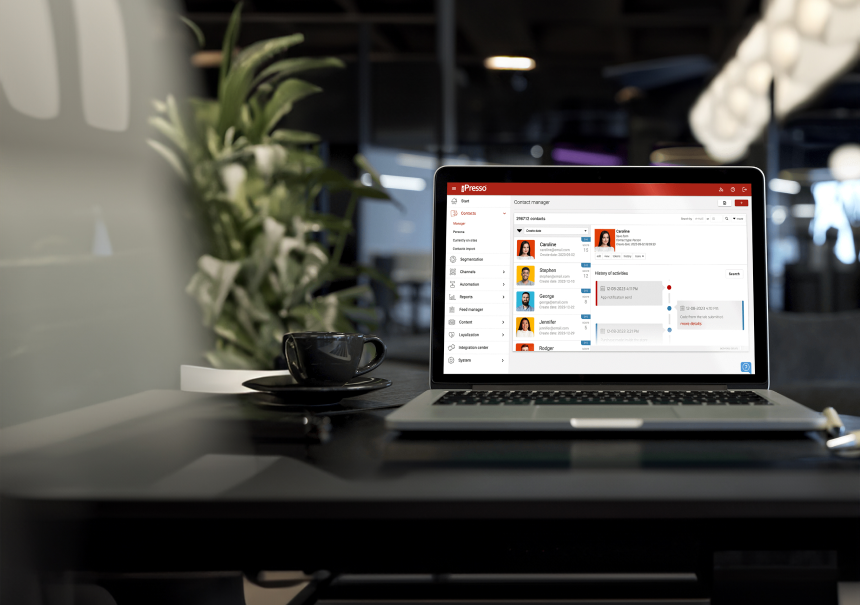The recipe for recovering abandoned carts and skyrocketing your sales instantly

Whether you run a product or a service-based business, you need to ensure that every potential customer is taken care of so that you don’t lose any sales opportunities. However, some customers show initial interest but then don’t follow through. At this point, you have two options – you can just let them go or introduce a process abandonment strategy to try and rescue at least some of the lost carts/leads. Let’s talk a little about the latter approach.
Responding to abandoned processes is important in almost every business because there can be many reasons why someone hasn’t finished the order/booking process. In some cases, something interrupts the process, and just a little reminder can help you set things straight and put the deal back on the table.
How can you rescue some of those abandoned carts/processes? With a strategy known as remarketing or retargeting. In iPresso, such a feature is available to respond to abandoned processes. With this feature, essentially, you can reach out again to people who were initially interested in your products/services. Let’s see how it can be done.
Retargeting scenarios
Everything starts with creating a specific retargeting scenario. With iPresso, you can design your own scenario from scratch (using our intuitive drag-and-drop editor) or use one of the hundreds of available templates. Many of them are designed to help you rescue some of the abandoned carts/processes in your business!
Such a scenario enables you to set specific conditions under which you want to reach out to a potential customer. Here are a few examples:
- Someone put a product in the cart in your online store and left the website without finishing the order
- Someone opened and started filling out the contact form on your website but never clicked the “send now” button
- Someone did reach out to your company but then didn’t finish the order or stopped the subscription to your service
Of course, these are just examples, but in many cases, that’s how it works. And this gives you the opportunity to rescue some of those customers and, of course, increase revenue.
Set conditions and actions
In our MA scenarios, you can simply set conditions that trigger the retargeting scenario (just like in the examples above). In such a situation, you can decide on what actions should be taken (e.g., an email should be sent or a push notification should be displayed) and with what delay (one, two, or more hours or days after the condition occurs).
Lauch such a scenario, and our marketing automation platform will take care of everything on auto-pilot. Now, every single time someone doesn’t finish an initiated process, they will get a reminder from your business – in the form and at the time you configured it in our system.
What communication channel to use
That depends on what channels you use in your business, but in general, it should be the same channel that was used by the customer in the first place. Usually, this will be via email, phone, or a website (in such a situation, you can respond with a push notification or with an email).
Most commonly, marketers use email, SMS, mobile apps, and push notifications to reach out to their target audience. In this post, we want to show you how push notifications can be used for retargeting purposes. Of course, you need consent from the customer to send such a notification, but once you get it, you can send very effective push notifications that can help you rescue many carts!
Below, we show you an example of such a push notification that was sent to a customer who was interested in a particular product that wasn’t available at the time. It’s a good idea to create such an option in your e-commerce store (you can use something along the lines of “let me know when this product is available again”). If you do so, sending a reminder will not only be 100% natural, but it will also be anticipated by your customer, and that’s the ideal situation.
How to make your reminders effective
Here, you have several things to consider. First of all, you ought to pick the right communication channel. If the customer reached out via email, send them a reminder using the same channel. That’s what your customer expects from you.
Secondly, give them some sort of incentive (of course, if you want). At this stage, balance is crucial; it shouldn’t be anything big but rather a small encouragement to come back and finish the process. A free delivery or a small discount (5 or 10%) is a good idea.
The third thing to consider is when you send the reminder. Time is of the essence here; don’t wait too long. With every hour and every day, your customer loses interest in your offer. in some cases, you should send a reminder within a few minutes after the condition occurs. In other cases, it’s good to wait a day or two. Another idea is to test different retargeting times to assess what times work best in your situation.
The last thing to consider is to not overdo retargeting. One or two reminders are usually enough. The lack of any answer to both reminders usually suggests that the given person is no longer interested in your offer. Again, you can implement some testing procedures to come up with the most effective solution.
Wrapping up
We encourage you to explore retargeting options in your business. Rescuing even 5 or 10% of leads can translate to much higher revenue and the money and time investment is minimal – once you set everything up, this system works on auto-pilot, and you don’t need to do pretty much anything.
If you’d like to see how retargeting works in practice, please reach out to our team. We’re happy to give you free, trial access to our platform so that you can check everything in real-life conditions. And if you have any questions, feel free to reach out to our team – we’re here to answer all the questions about marketing automation you may have!



